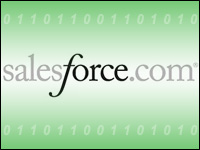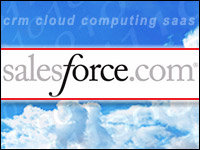
OK, we survived Dreamforce and that has enabled us to limp home exhausted by all the information we accumulated and the parties we attended just in time for the holidays.
I have a lot of thoughts about the show. If I try to share most of them, the result will be a stream-of-conscious rant that will make little sense, so some discipline is in order. I’ll have more to say about Dreamforce later, but for now I’ll concentrate on two things that I think were monumental: Salesforce1 and Superpods.
The Superpod Shift
Superpods should come first, in part because this announcement seems to have been delivered in an offhand way — in part to minimize its importance as a shift in Salesforce’s worldview.
For the entire life of the company, Salesforce has emphasized the importance and correctness of having one big repository of data — the multitenant model that provided efficiency as well as security for all customers. No separate systems with private spindles managing disparate data farms for these guys.
Metadata would handle everything, and it did. Today the company has, I am told, 14 pods or systems of compute power and storage that interact to balance load, provide redundancy, and present the world with the face of a monolithic system.
In announcing Superpod with Meg Whitman, CEO of HP, Marc Benioff changed that. HP will have its own Superpod and still be one with the Salesforce universe. Moreover, Salesforce will make the Superpod approach available to any other entity with pockets deep enough to choose the option. That includes banks, governments, and large enterprises that look like small governments — you get the picture.
I think it’s a good idea, in part because I think the company has taken its — shall we say, “socialized” — strategy about as far as it can go. Multitenancy is not going the way of the carrier pigeon, but as they say in politics, you can’t fight city hall — and city hall wants its own pod. So it’s a no-brainer.
The mitigating news is that the Superpod is still going to be managed by Salesforce in a Salesforce facility, which means upgrades and maintenance will still be more or less synchronized. The “more or less” refers to timing upgrades. The owner of a Superpod will likely want to ensure an upgrade is not scheduled for a busy season, for example.
This brings me back to a breakfast meeting with a venture capitalist about five Dreamforces ago. He asked me how the company would continue offering its multitenancy as it continued to grow. Would it ever consider going a Superpod route? My opinion was that at some point it would have to, and for five long years I have looked nave in that assessment, but now here it is.
You might say, so what? It could have happened any time, and from all appearances Superpods will still be tightly associated with the rest of Salesforce’s pods if only because the AppExchange has to be available to them.
That’s true, but it is also my belief that Superpods couldn’t have been announced until the platform was rationalized, and now it has been. So I very much see the two ideas as more tightly intertwined than the relative juice behind the announcements suggests.
The Salesforce1 Unification
Salesforce1 is one of the biggest announcements in the company’s history, and I think the idea of the software as platform, rather than the hardware and metadata infrastructure that has been the company’s secret sauce, represents a key inflection point.
The platform was in need of some re-architecting for several reasons. There were many overlapping technologies added to the core platform over time, and the work that went into Salesforce1 ensured that all of the Visualforce, Apex code and other historically significant technologies could be gracefully upgraded. This meant increasing the platform’s APIs by an order of magnitude. Today, Salesforce1 has 10 times the number of APIs that Force.com had last week.
The new platform will now provide a welcoming environment for all of Salesforce’s past and future tools and techniques, and it presents a clean sheet to begin the Superpod era, which also is properly to be called “the era of platform computing.”
As I’ve mentioned previously, platform is not simply about development. Importantly, it refers to provisioning applications with myriad capabilities, whether or not they are used.
Starting with a clean sheet of paper, Salesforce re-imagined not only computing, but also business in an age of high mobility and rapid transactions — and at a time when customers want much more than a vendor’s core product delivered.
Today’s customers expect their vendors to meet them in any channel and to authentically participate in moments of truth that either build relationships or signal customers that they need to find an alternative supplier. Salesforce, with its partners and through its platform, does that.
Platform computing supplies this need not simply by enabling better integration. By enabling applications to share common objects, the platform streamlines all applications and reduces redundancy and other business friction.
A single sign-on makes for better inter-application cohesion and supports the idea of a unified business process across applications and throughout the organization. Using common objects and a common platform also makes reporting and analytics more powerful by making all relevant data immediately accessible.
The common platform makes any upgrade simple and significantly reduces system down time normally associated with maintenance while eliminating costly re-work for integrations.
Also, the huge number of apps in the AppExchange, which continues to grow, ensures that customers will have the broadest selection of compatible applications as their businesses expand.
Finally, the open API further assures all users that they can easily go outside of the Salesforce paradigm if that’s ever needed for incorporating legacy systems or those of a third party.
So in my analysis, Salesforce1 presents the face of business computing’s future whether that expression is found in the largest enterprise or the newest startup. It’s a far cry from those dreaded words of legacy computing days, “our system won’t let us do that,” and it comes at a time when the business demands on IT are only accelerating.























































